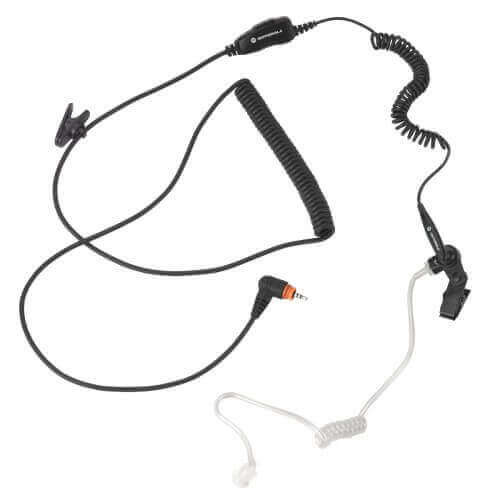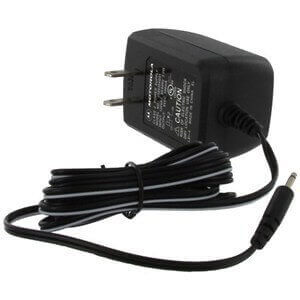Walkie-Talkies are communication devices. They use radio waves for transmission and reception of voice signals. To communicate with Walkie-Talkies, both devices must synchronize on the same wavelength or the same channel.
They are perfect for leisure activities (excursions, hunting, camping, etc.), but also in some professional sectors such as warehouse management, construction, catering, hospitality and tourism, events, department stores and retail business. To get the best out of your walkie-talkie, it is necessary to know which devices are the most suitable for your needs and define your selection criteria. They are generally simple to handle but must be chosen with care!
DEFINE YOUR WALKIE-TALKIE PURPOSE
There are two types of use: professional and occasional use.
PROFESSIONAL USE
The use of professional walkie-talkies is common in the construction, events, security, transportation and many other industries (forestry, mining, petroleum, manufacturing, etc.). In this way, you have the possibility of ensuring permanent and secure communication amongst all your employees.
OCCASIONAL USE
Outdoor activities such as hunting, hiking, dog sledding and snowmobile excursions generally need to provide long-distance communications. Walkies-Talkies used in recreational activities have the advantage of providing a stronger signal than cellphones. Even in remote areas, their use ensures a more stable and safer communication. Also, this security feature is enhanced by an easy-to-use emergency alert options, available on many walkie-talkie models.
ENSURE THE QUALITY OF RADIO COMMUNICATION DEVICES
When considering the purchase or renting a Walkie-Talkie, let’s be honest: it is always better to see the model or to ask a professional to find out which one will serve us and best cover our needs. When it’s the moment to choose the right one, it is important to pay attention to its quality in order to be able to use it. For example, in certain jobs such as in the mining sector, Walkie-Talkies require special quality and material reinforcement. Consider this: would a hand-free kit be needed?
DIGITAL VS ANALOGUE
After validation of your priorities, it is important to consider the difference between digital and analogue Walkie-Talkies for your intent to use the devices.
ANALOGUE WALKIE-TALKIE
First, we have analogue Walkie-Talkies which do not require any subscription or licence to communicate with each other. Analog walkie-talkies give you completely free communications. They also offer you a wide choice of channels that you can use freely. The devices are all compatible with each other, whatever the brand and model. These devices allow you to equip yourself at a lower cost and bring you additional peace of mind in your work.
DIGITAL WALKIE-TALKIE
Second, we have digital devices that offer superior audio quality. The main advantage of these walkie talkies is that there are no loss of signal and therefore, the range is increased compared to analogue devices. Compared to analogue radio, two-way digital radio offer improved audio quality, more features, increased security and more efficient use of channels. You can also double the capacity of your channels and, therefore, the number of users that the system can support. This means that, on the same 12.5 kHz channel, you could have two simultaneous and independent communication channels when analogue offers only one.
HYBRID WALKIE-TALKIE
Some walkie-talkies are built with hybrid configurations: digital or analogue. This double feature allows communication free of charge but with better audio quality thanks to digital technology. You benefit from a higher number of channels. These hybrid models allow you a smooth transition from analogue to digital, as they are compatible with both models.
ROBUSTNESS OF WALKIE-TALKIE
As for the characteristics to help you make your decision, everything will depend on the usage. It’s wise to consider the solidity, the waterprofing and robustness. It is recommended that the model you choose must be shockproof. If you plan to use it in rough terrains, opt for one that is robust.
It all depends on the use, but we think that in general, certain characteristics should be taken into account when you consider buying a walkie-talkie. For example, construction workers need models of great strength and resistance.
SIGNAL RANGE
As for the range, walkie-talkies allow communication between two devices at a distance of 8 to 10 kilometres. The range may be different depending on the environment in which it is used, the terrain or the weather conditions that exist. Start by defining your needs to find the walkie-talkie that would best suits them. You can also contact a team of radiocommunication professionals who will analyze your needs and provide you with the best information.
Rechargeable batteries for Walkie-Talkies
NI-MH batteries
This type of battery can thus offer up to 10 hours of walking in theory, but in practice the charge is around 15 hours. Ni-MH (nickel-water metal) is also very popular, because it no longer contains polluting elements such as cadmium or lead. However, this type of battery requires a high-performance charger which includes a charging stop system, since the Ni-MH is easily damaged by overcharging.
Li-Ion batteries
In the case of the Li-Ion battery, it can be recharged and offer a range of 20 hours. The Li-Ion has an extremely efficient electrochemical potential which requires special measures to make its use safe. Regardless of the charge cycle (battery drained of any charge and then recharged), Li-Ion charge accumulators last an average of 3 years.
Notable difference
The first difference concerns the power supplied by these two batteries, since a Li-ion element is equivalent to three Ni-MH elements. The second difference, which is one of the main attractions of Li-Ion, is the absence of the memory effect unlike Ni-MH. Indeed, to last the batteries should only be recharged when they are almost empty while the batteries gain in longevity when they are charged at will.
The other difference is in the cost of the batteries. Thanks to a wider distribution, Ni-MH batteries cost less than Li-Ions and are available in several product ranges (batteries, rechargeable batteries ...) for which the performance differences between Li-Ion and Ni MH are not significant.
THE VHF (VERY HIGH FREQUENCY) & UHF (ULTRA-HIGH FREQUENCY) ANTENNAS
- VHF -> frequency from 30 to 300 MHz -> wavelength from 10 to 1 m -> larger antenna
- UHF -> 300 to 3000 MHz -> 1 to 0.1 m -> smaller antenna
The length of the antenna is proportional to the wavelength. At equal power, the two types of antennas have the same range.
What basically differentiates them is the propagation of the signal. In UHF, the propagation is almost visible. Propagation therefore takes place in a direct line. Thus, signals are much more easily disrupt by intermediate obstacles.
On the other side, the wavelength is greater for VHF. Waves bypass more easily small obstacles (theoretically less than the wavelength). In the bottom of valleys for example, the VHF is transmitted much better than the UHF. That is why it was used by the police in rural areas. But the UHF, the propagation inside buildings is much better.
IN CONCLUSION, ON YOUR CHOICE OF WALKIE-TALKIE,
The important thing to remember before renting or buying a Walkie-Talkies model is to make sure it meets your needs. It would be absurd to get a poor-quality model to work in a mining operation or in jobs that require quality and sturdy materials.
It is always worth listening to the advice that professionals can give you on this subject. At Accès Communication, you can not only find countless models of walkie-talkies, but we also like to inform the customer so that they find the type of model to suit their activities. It is best to hear advice and make the most appropriate decision for better value for money.


